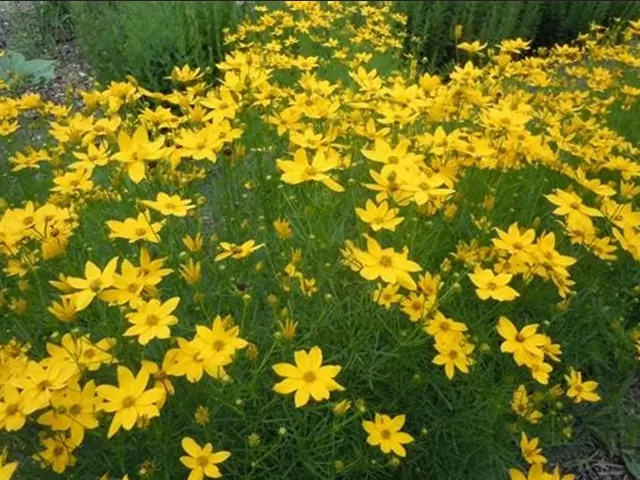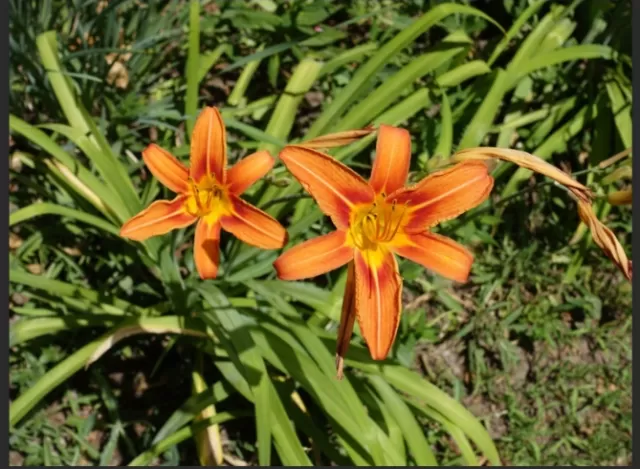Yellow Perennial Flowers for a Brighter Landscape. In garden design, few colors wield as much impact as yellow. The cheerful and vibrant hue not only brightens landscapes but also complements various garden styles, from the charming English cottage to the water-efficient xeriscape. Introducing perennial plants with yellow flowers to your garden ensures a lively and enduring display year after year. Here are some visually impressive yellow perennials to consider:
Black-Eyed Susans (Rudbeckia): Known for their striking yellow flowers with contrasting dark centers, Black-Eyed Susans add a burst of color and visual interest to gardens.
Daylilies (Hemerocallis): With their trumpet-shaped blooms, daylilies contribute a daily display of vibrant yellow flowers throughout the growing season.
Coreopsis (Tickseed): Featuring flat-topped clusters of tightly packed flowers, Coreopsis not only adds ornamental value with its feathery foliage but also attracts butterflies and bees.
Yarrow (Achillea): Known for its low maintenance and feathery, fragrant, gray-green foliage, yarrow is irresistible to butterflies and bees.
Perennial Sunflowers (Helianthus): These native sunflowers, resembling smaller versions of annual sunflowers, offer late-season blooms with bright yellow or orange petals, attracting butterflies and providing seeds for songbirds.
Tickseed (Coreopsis): Native to most of the United States, tickseed boasts long-lasting, bright daisy-like blooms and delicate fern-like foliage.
By incorporating these yellow perennials into your garden, you not only introduce vibrant color but also contribute to the ecological diversity by attracting pollinators. The enduring nature of perennials ensures a consistent and reliable source of beauty in your garden for years to come.
Tickseed (Coreopsis): A Vibrant Native Perennial

Tickseed (Coreopsis), native to most regions of the United States, is celebrated for its vibrant and enduring qualities.
According to Phillips, this perennial is characterized by its long-lasting, bright daisy-like blooms that create a stunning display in early summer. The golden yellow flowers not only contribute to the garden’s visual appeal but also serve as a magnet for numerous butterflies, adding a touch of wildlife charm.
As the seasons progress, Tickseed continues to make its mark.
Phillips notes that in late summer, the plant produces seeds that become a food source for birds, enhancing its ecological value. The foliage of Tickseed is described as delicate and fern-like, introducing a unique texture to the garden that adds depth and interest.
This native perennial, with its attractive blooms and ecological benefits, stands as a versatile and welcomed addition to gardens across the United States.
Whether you’re looking to enhance your garden’s aesthetics or create a habitat-friendly space, Tickseed’s enduring beauty and adaptability make it a standout choice for diverse landscapes.
Native Perennial Sunflowers: Late Season Delight
The native perennial sunflowers, belonging to the Helianthus genus, bring late-season splendor to gardens with their distinctive showy blooms.
These perennials offer a familiar charm reminiscent of their annual counterparts but return year after year, making them a reliable and enduring choice for gardeners. According to Phillips, they present an abundance of cheery, bright yellow or orange petals surrounding a central disc, creating a captivating display that lasts for weeks.
In addition to their visual appeal, native perennial sunflowers play a vital role in supporting local ecosystems.
Phillips notes that these sunflowers attract butterflies in early to mid-summer, contributing to the biodiversity of the garden. Furthermore, leaving the later flowers intact provides a valuable food source for songbirds, as they feast on the seeds.
The native perennial sunflower stands as a delightful and ecologically beneficial addition to gardens, offering not only aesthetic beauty but also playing a role in supporting local wildlife.
With their ability to return and bloom year after year, these sunflowers bring a touch of enduring elegance to late-season landscapes.
Black-Eyed Susans (Rudbeckia): A Contrast of Beauty

Black-eyed Susans (Rudbeckia) are renowned for their striking appearance, characterized by yellow flowers adorned with distinctive black centers.
The visual contrast created by this combination adds to the plant’s allure. However, it’s essential to note that Black-eyed Susans can exhibit varying lifespans—perennial, biennial, or annual—depending on the specific variety.
According to Linda Langelo, a horticulture specialist at Colorado State University, some perennial varieties of Black-eyed Susans include ‘Indian Summer’ and ‘Cheyenne Sunset.
‘ These perennials not only showcase the signature beauty of the species but also return year after year, contributing to the enduring charm of garden landscapes.
With their vibrant colors and contrasting features, Black-eyed Susans bring a touch of elegance and visual interest to gardens.
Whether as a perennial mainstay or a seasonal burst of color, these flowers are a versatile and welcomed addition to diverse landscapes.
Yarrow (Achillea): Perennial Beauty with Low Maintenance Appeal
Yarrow (Achillea) stands out as a perennial plant appreciated for its distinctive flat-topped clusters of densely packed flowers.
Not only is yarrow an easy-to-grow bloom, but its low-maintenance nature adds to its appeal for gardeners. According to Kelly Funk, president of Jackson & Perkins, the plant’s feathery, fragrant, gray-green foliage enhances its ornamental value and its ability to attract pollinators.
The allure of yarrow extends beyond its visual appeal; its fragrance and textured foliage contribute to its overall charm.
As a pollinator-friendly plant, yarrow becomes a magnet for butterflies and bees, fostering biodiversity in the garden.
With its resilience, aromatic presence, and attractiveness to pollinators, yarrow emerges as a versatile and valuable addition to garden landscapes.
Whether you’re aiming for a low-maintenance garden or seeking to enhance pollinator activity, yarrow’s ornamental and ecological benefits make it a delightful choice for diverse gardening preferences.
Daylilies (Hemerocallis): Daily Splendor in the Garden

Daylilies (Hemerocallis) bring a daily spectacle to the garden with their unique characteristic of producing new blooms each day.
According to Kelly Funk, president of Jackson & Perkins, these perennial flowering plants are celebrated for their vibrant and showy blooms, which persist from summer until the first frost.
The signature feature of daylilies is their trumpet-shaped blossoms, comprised of six petals that create a captivating floral display.
The long, grass-like foliage of daylilies adds an attractive contrast to the bright yellow flowers, enhancing the overall visual appeal of the plant.
To encourage additional blooming, gardeners are advised to deadhead spent flowers and foliage.
This practice not only maintains the aesthetic beauty of the plant but also stimulates the continuous production of new blooms, ensuring a prolonged display of daylily splendor in the garden. With their daily bursts of color and resilience, daylilies stand as enduring favorites in garden landscapes.
*The information is for reference only.